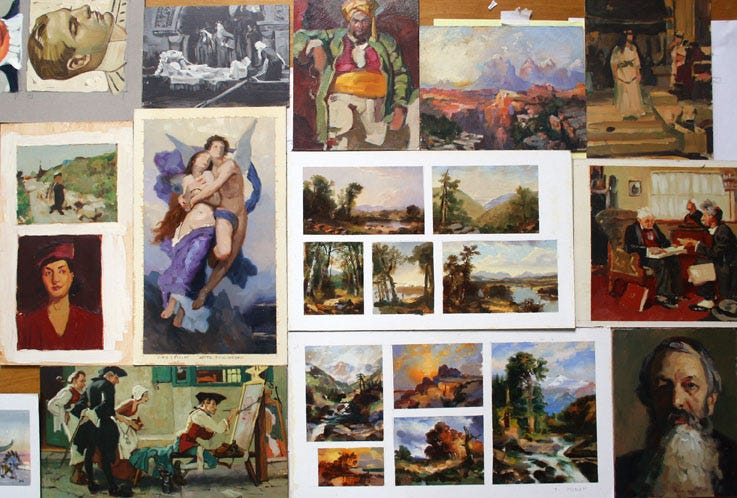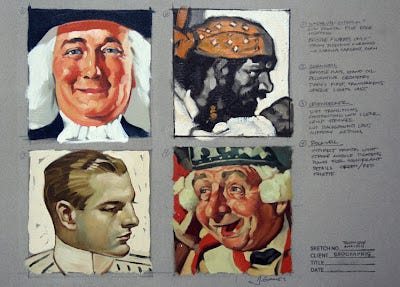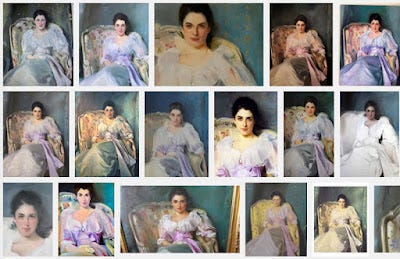A reader asked what I thought of making master copies. I would like to discuss this issue from a few different angles.
Copying a master's work was, and still is, one of the best ways to learn. Here are some of the copies I did when I was teaching myself to paint. They include postcard-sized copies of Rockwell, Bouguereau, Waterhouse, Moran, Cornwell, and a painting of Stasov that we’ll revisit later.
Many art students do copies at the same size of the original, matching it as closely as they can. Not surprisingly, the market for historical paintings is filled not only with forgeries but also with copies made as legitimate learning exercises, though they should be labeled as such to avoid confusion.
As an exercise before a day of composing, Chopin would spend an hour or two playing music from Bach’s Well-Tempered Clavier. When he played Bach’s music he felt he absorbed the master through the pores in his fingertips.
Just as a musician evokes a previous master when playing their music, artists commune with past masters when they make a copy. It’s a great way to practice and learn. It’s the shortest path to understanding.
The safeguard against becoming derivative is to copy several different artists side by side to see how many ways there are to solve a painting problem.
For example, the goal of these copies was to compare how four classic illustrators painted a head. You may recognize, (clockwise from the upper left): Haddon Sundblom, Dean Cornwell, Norman Rockwell, and J.C. Leyendecker.
By trying to replicate a little detail from each one, I could get a better feel for what kinds of brushes and mediums they used and what sequence of steps they had to follow to get their results.
Leyendecker, for example, must have spent time in the early stages working out soft transitions within the form. Only at the end would he cut in the background with big light strokes using a smooth, slippery medium.
Each of these great illustrators developed his own way of painting by absorbing earlier masters. There’s a bit of Zorn in Sundblom, Brangwyn in Cornwell, Bouguereau in Leyendecker, and Rembrandt in Rockwell. We stand on each other’s shoulders, and we see through each other’s eyeballs.
Are Master Copies Clogging the Internet?
Painting copies of master paintings is an great way to learn. I recommend it as a student practice. But is it a good idea to post them?
Which is real and which is the copy? What should we do about this?
Keep reading with a 7-day free trial
Subscribe to Paint Here to keep reading this post and get 7 days of free access to the full post archives.







